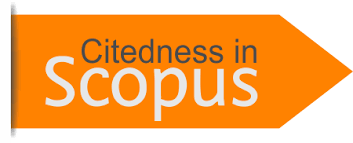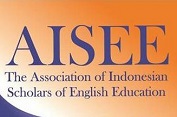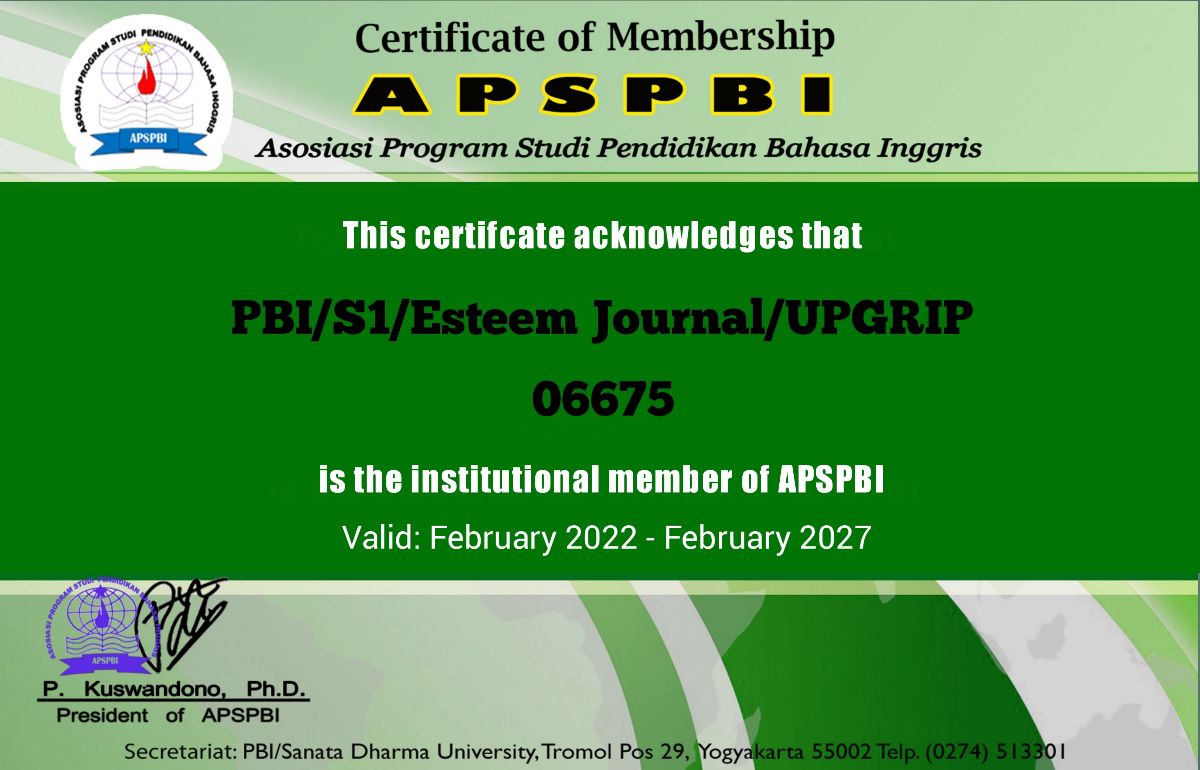LISTENING MATERIALS IN ENGLISH TEXTBOOK: QUALITY REVIEW
DOI:
https://doi.org/10.31851/esteem.v6i2.12460Keywords:
Listening, Materials, English, Textbook, Quality ReviewAbstract
The objective of this study was to assess the quality of listening materials in the English textbook "Work in Progress: Buku SMA," published by Pusat Perbukuan in 2022. The research focused on evaluating the effectiveness of the listening materials based on a set of criteria developed by Zhang (2020). The research question formulated was, "What is the quality of the listening materials in the English textbook?" The methodology employed in this research was content analysis. The data were collected through document analysis, and the researcher organised and classified the data into eight criteria. After categorising the data according to the seven criteria, the researcher analysed the data chapter by chapter. Finally, conclusions were drawn based on the findings. According to the results, out of the eight criteria, five were fully met, one was partially met, and two were not met. Therefore, it can be concluded that the listening materials in the English textbook "Work in Progress" are deemed "effective."
References
Akyel, A., & Ozek, Y. (2017). A Language Needs Analysis Research at an English Medium University in Turkey. Procedia - Social and Behavioral Sciences 2 (2).
Allwright, R. (1982). Perceiving and Pursuing Learner's Needs. M, Geddes & G Sturtridge Individualization Oxford of Modern English Publication, 1-10.
Astika, G. (2018). The Role of Need Analysis in English for Specifics Purposes. TEFLIN Journal Volume X Number 1, 36.
Gopal, K., Boon, Q. W., & Gengatharan, S. (2021). Need Analysis of English for Hospitality Industry Students: A Case Study in Sungai Petani Community College. AJELP: The Asian Journal of English Language and Pedagody, 43-53.
Hapsari, D. P., & Elyono, D. (2020). Developing and Using English Teaching Materials in Vocational High School: A case Study to Vocational English Teachers. English Educational Department: TTEF, 92.
Hutchinson, T., & Waters, A. (1987). English for Specific Purposes. Cambridge: Cambridge University Press.
Juan, L. (2014). Literature Review of Classifications of Needs Analysis Theory. International Journal of Education and Literacy Studies, 14-16.
Mahbub, M. A. (2018). English Teaching in Vocational High School: A Need Analysis. JEELS, 229.
Mohammed, A. S., & Nur, H. S. (2018). Need Analysis in English for Academic Purposes: The Case of Teaching Assistants at the University of Kharotum. HOW Vol 25, No 2, July, 49-56.
Nation, I., & Macalister, J. (2010). Language Curriculum Design. Newyork: Routledge Taylor and Francis Group.
Richards, J. C., & Schmidt, R. (2010). Longman Dictionary of Language Teaching and Applied Linguistics. Great Britain: Pearson.
Richards, J., & Rodger, S. (2001). Approach and Methods in Language Teaching. Cambridge: Cambridge University Press.
Riyantika, F., Endra, R. Y., Afrulli, T. P., & Ayu, K. (2020). Needs Analysis of English for Specifics Purposes at Food Beverage Emersia Hotel Bandar Lampung. Vol 3 Bo 2 Oktober 2020, 7-11.
Robinson, P. (1991). ESP Today: Practitioner's Guide. New York: Prentice Hall.
Srijono, D. (2016). Needs Analysis and Course Design. English Department FKIP UMS, 49.
Vogt, K., &Kantelinen, R. (2013). Vocationally Oriented Language Learning Revisited. ELT Journal, 67 (1), 62.
Downloads
Published
Issue
Section
License
Copyright (c) 2023 Shabrina Ikbar, Hermansyah Hermansyah, Evi Rosmiyati

This work is licensed under a Creative Commons Attribution-NonCommercial-ShareAlike 4.0 International License.
Copyright Notice
Authors who publish with this journal agree to the following terms:
In order to assure the highest standards for published articles, a peer review policy is applied. In pursue of the compliance with academic standards, all parties involved in the publishing process (the authors, the editors and the editorial board and the reviewers) agree to meet the responsibilities stated below in accordance to the Journal publication ethics and malpractice statement.
Duties of Authors:
- The author(s) warrant that the submitted article is an original work, which has not been previously published, and that they have obtained an agreement from any co-author(s) prior to the manuscript’s submission;
- The author(s) should not submit articles describing essentially the same research to more than one journal;
- The authors(s) make certain that the manuscript meets the terms of the Manuscript Submission Guideline regarding appropriate academic citation and that no copyright infringement occurs;
- The authors(s) should inform the editors about any conflict of interests and report any errors they subsequently, discover in their manuscript.
Duties of Editors and the Editorial Board:
- The editors, together with the editorial board, are responsible for deciding upon the publication or rejection of the submitted manuscripts based only on their originality, significance, and relevance to the domains of the journal;
- The editors evaluate the manuscripts compliance with academic criteria, the domains of the journal and the guidelines;
- The editors must at all times respect the confidentiality of any information pertaining to the submitted manuscripts;
- The editors assign the review of each manuscript to two reviewers chosen according to their domains of expertise. The editors must take into account any conflict of interest reported by the authors and the reviewers.
- The editors must ensure that the comments and recommendations of the reviewers are sent to the author(s) in due time and that the manuscripts are returned to the editors, who take the final decision to publish them or not.
Authors are permitted and encouraged to post online a pre-publication manuscript (but not the Publisher final formatted PDF version of the Work) in institutional repositories or on their Websites prior to and during the submission process, as it can lead to productive exchanges, as well as earlier and greater citation of published work (see The Effect of Open Access). Any such posting made before acceptance and publication of the Work shall be updated upon publication to include a reference to the Publisher-assigned DOI (Digital Object Identifier) and a link to the online abstract for the final published Work in the Journal.





























